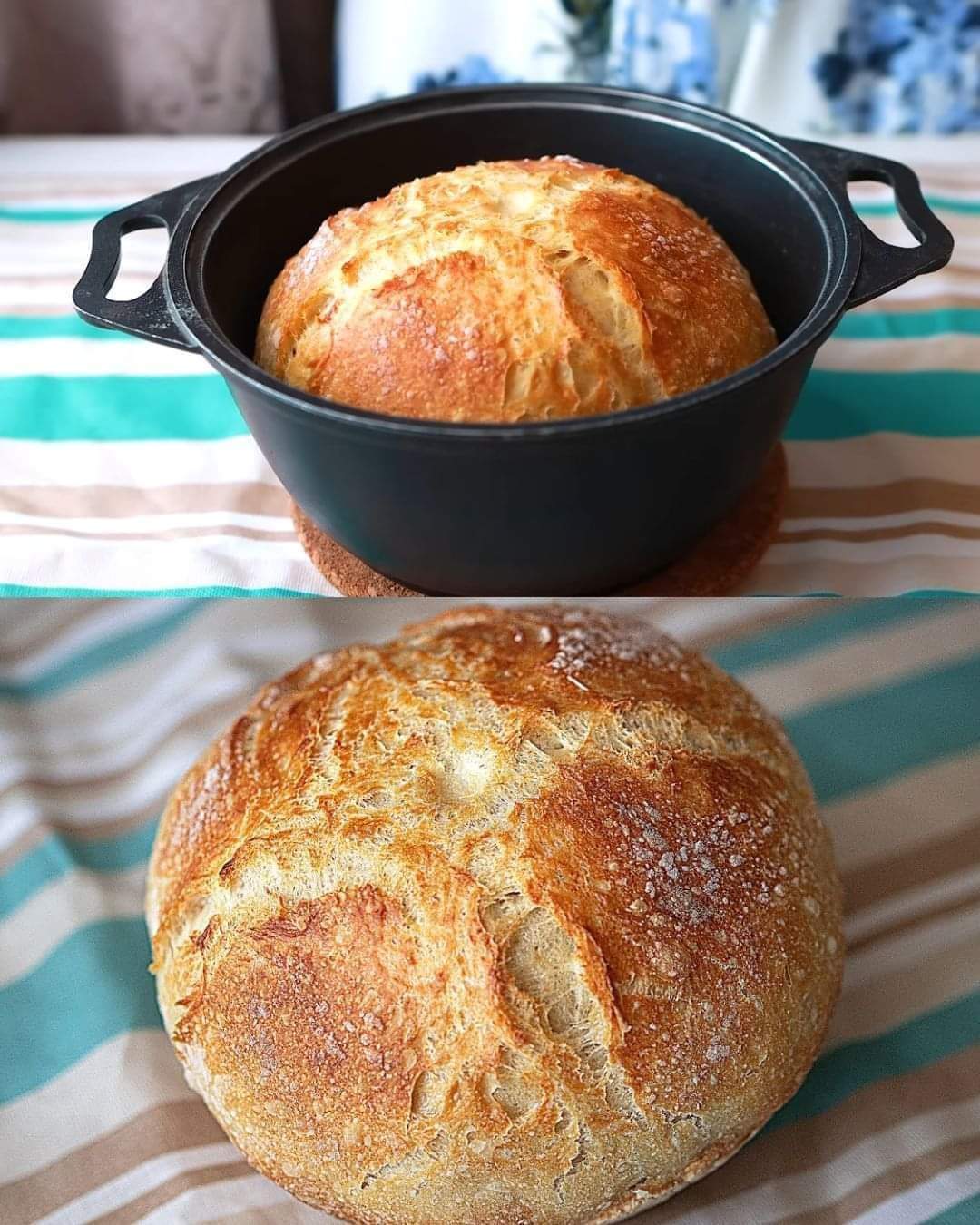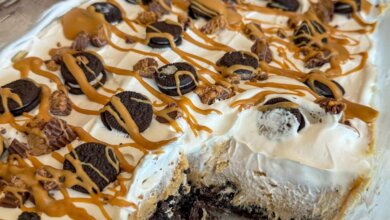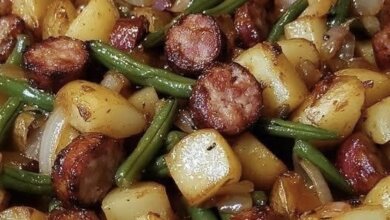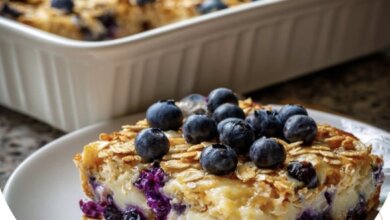Traditional Homemade Bread Recipe

Traditional Homemade Bread Recipe
Crafting traditional homemade bread is an art that both novice and seasoned bakers can master. With just a few basic ingredients, you can create a loaf that boasts a light and airy texture, complemented by a crisp, golden crust. Whether enjoyed straight from the oven or after it has cooled, this bread is perfect for sandwiches, toast, or simply a slice with butter.
Ingredients and Preparation Time
- Preparation Time: 20 minutes
- Cooking Time: 25-30 minutes
- Resting Time: 2-3 hours
- Total Time: 3-4 hours
Ingredients:
- Warm water: 1 1/2 cups (370 milliliters)
- Active dry yeast: 2 teaspoons (10 grams)
- All-purpose flour: 4 cups (500 grams)
- Salt: 1 teaspoon
Method
1. Activate the Yeast:
In a large bowl, combine lukewarm water (370 ml) and active dry yeast (10 g). Stir gently and let it sit for 5-10 minutes until the yeast dissolves completely and starts to bubble.
2. Prepare the Dough:
Add 500 grams of flour and 1 teaspoon of salt to the yeast mixture. Mix with a wooden spoon or your hands until a shaggy dough forms.
3. Knead the Dough:
Transfer the dough to a lightly floured surface and knead by hand for 8-10 minutes until it becomes smooth and elastic. If the dough is too sticky, add additional flour, one tablespoon at a time.
4. First Rise:
Place the dough in a lightly oiled bowl, cover it with a damp cloth, and let it rise in a warm place for 1-2 hours, or until it has doubled in size.
5. Shape the Dough:
Punch down the risen dough to release any air bubbles. Shape the dough into a loaf or your preferred shape, then place it on a parchment-lined baking sheet or in a greased loaf pan.
6. Second Rise:
Cover the dough again with a cloth and allow it to rise for another 30-45 minutes until it has doubled in size.
7. Bake the Bread:
Preheat your oven to 200°C (400°F). Bake the bread for 25-30 minutes, or until the crust turns golden brown and the loaf sounds hollow when tapped on the bottom.
8. Cool and Serve:
Remove the bread from the oven and let it cool on a wire rack before slicing. Enjoy your freshly baked bread warm or at room temperature.
Tips:
- For a softer crust, brush the top of the bread with melted butter after baking.
- Add seeds or herbs to the dough for extra flavor and texture.
Why You’ll Love This Recipe
- Easy to Prepare: Simple ingredients and straightforward steps make this recipe ideal for beginners.
- Versatile: The soft, fluffy interior and crunchy crust make this bread perfect for various uses, from sandwiches to toast.
Frequently Asked Questions
Can I use instant yeast instead of active dry yeast?
Yes, you can use instant yeast. If you do, there’s no need to activate it separately—simply mix it directly with the dry ingredients.
How do I know if my yeast is still active?
To check the viability of your yeast, combine it with lukewarm water and a pinch of sugar. If it becomes bubbly within 5-10 minutes, it’s good to use. If not, it’s best to replace it with a fresh batch.
Can I make this bread gluten-free?
Yes, you can use a gluten-free flour blend that’s suitable for bread baking. Be aware that gluten-free dough may require special handling and extra time to rise.
How can I soften the crust?
To achieve a softer crust, you can brush the loaf with melted butter after baking or cover it with a clean, damp cloth immediately after removing it from the oven.
Can I add extras like seeds, nuts, or herbs?
Absolutely! You can incorporate seeds, nuts, or herbs into the dough during mixing for added flavor and texture.
What should I do if my dough is too sticky?
If your dough is too sticky, gradually add more flour, one tablespoon at a time, until the dough is smooth and elastic.
How should I store the bread to keep it fresh?
Store the bread in a bread box or a sealed plastic bag at room temperature for up to 3 days. For longer storage, freeze the bread in an airtight container or freezer bag for up to 3 months.
Can I prepare the dough ahead of time?
Yes, you can prepare the dough in advance and refrigerate it after the first rise. When ready to bake, let the dough come to room temperature and rise again before shaping and baking.
Why did my bread turn out dense?
Dense bread can result from under-kneading, insufficient rising time, or using expired yeast. Ensure the dough is kneaded until smooth and elastic, and allow adequate time for rising.
Can I use a bread machine to make this bread?
Yes, follow your bread machine’s instructions, typically adding ingredients in the order recommended by the manufacturer, starting with liquids and ending with dry ingredients.



